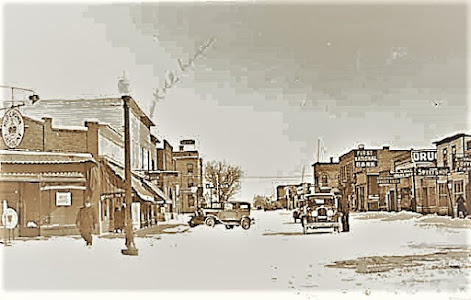Reynold Otto Glaeve: Personal Time Line
· 1917 Birth June 22, Cass Lake, Hubbard Cnty MN
Lora Amelia Glaeve dies October 24, 1917
· 1922, Age 5 The family moves off the farm to town of Cass Lake
Martin, Martha and Reynold in Cass Lake
· 1925, Age 8 The family moves to West St. Paul MN.
· 1925-1926, grade 3 at Crowley Elementary
· 1926-1931, grade 4-8 at Emanuel School
dies Dec 23, 1929 Age 16
· 1931 -1932 Roosevelt Jr. High School
· 1933-1934 Vocational High School
The family first lived on South Robert Street. It was named after Captain Louis Robert, a French voyageur and later river boat captain who plied his stern-wheelers on the Mississippi River between St. Louis and St. Paul. The street was paved in 1923 from Annapolis down to Arion. The remainder was paved shortly thereafter. And then in August of 1926 the new Robert Street Bridge opened and the street soon became the main business and recreational venue for the West Side.
Travel would have been primarily by streetcar. The old horse drawn cars were replaced in 1921 by the new electric ones. The Robert Street line stopped down at the corner and, with a few transfers, you could make it all the way to Excelsior and the Glen Lake Sanitorium.
Glen Lake TB Sanitorium

Speculation is that Martha and possibly Martin were suffering from TB. Marie Glaeve,sister of Reynold, lived and was a nurse at the facility

Dad went to Roosevelt Junior High School, at 150 East Congress Street, from 1931-1932. We know that Martha was also in attendance and assume that Martin attended as well. This postcard shows the building with students ca. 1930.
The choice for high school was between
Humboldt High or Boys Vocational School. He chose "Vocational" and I know he was
happy with the machinist training he received during
the years 1932-1934. The new building which opened in 1923, was at 651 Jackson
between Jackson and Robert. It was across the
street from Mechanic Arts High School. The street car probably stopped at the
corner, but most likely he walked when he could, to save the nickel
We know little about Martin, other than his vital statistics. We are happy to have this photograph taken after the family moved to St. Paul.
Martin Glaeve

Death: April 2, 1934 Age: 20, (West) St. Paul, Ramsey, Minnesota
Burial: Riverview Cemetery, (West) St. Paul

Martin is buried beside his sister Martha in Riverview Cemetery. At a later date his older sister Marie, was also buried next to him.
Riverview Cemetery is located in St. Paul. It is just
across the street from West St. Paul (Dakota County). It is East of Robert
Street and on Annapolis Street the border
between St. Paul and West St. Paul.
























